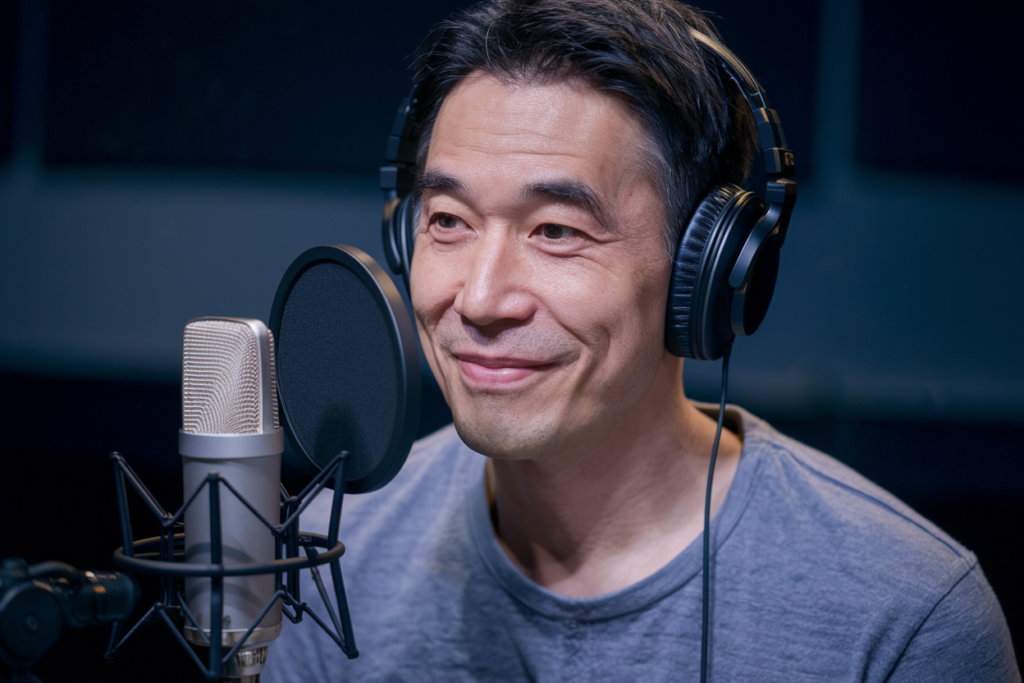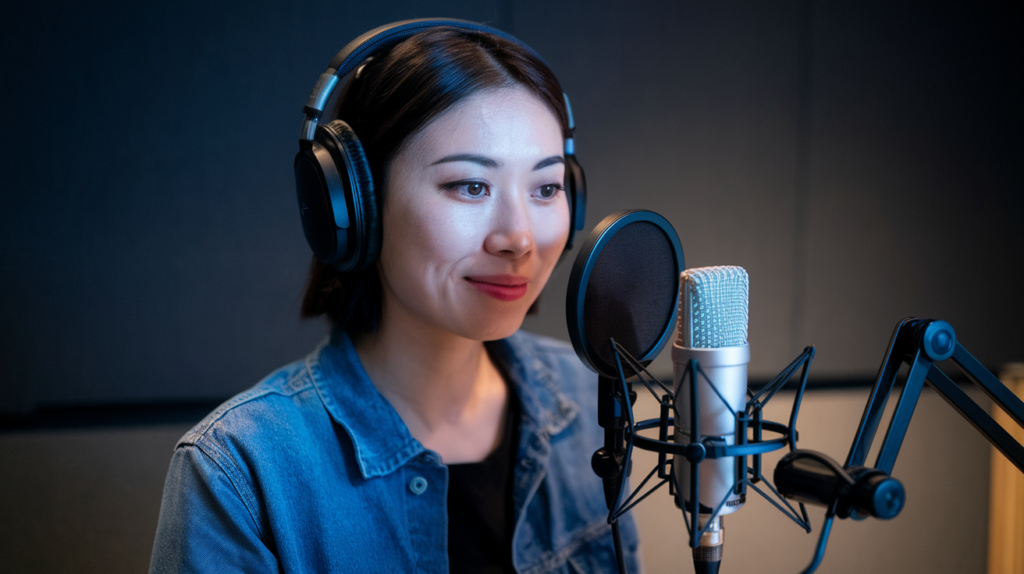Key Takeaways
- Understanding Video Dubbing: Dubbing involves replacing original dialogue with new audio tracks to make content accessible and enhance emotional impact.
- Importance of Dubbing Japanese Videos: High-quality dubbing allows non-Japanese speakers to enjoy rich narratives, expands audience reach, and ensures authentic character connections.
- Key Techniques for Success: Focus on voice acting skills and synchronization for a natural flow that matches the original performances without losing meaning.
- Recommended Tools and Software: Utilize audio editing software like Audacity, Adobe Audition, or Reaper alongside video editing tools such as Adobe Premiere Pro or Final Cut Pro X for seamless dubbing.
- Best Practices: Maintain cultural relevance by adapting content for the target audience and ensure high audio quality through professional equipment and careful post-production editing.
Ever wondered how to make your favorite Japanese videos accessible to a wider audience? Dubbing can be the key, and if you’re looking for the best ways to dub Japanese videos, you’ve come to the right place. With the right techniques, you can transform captivating content into a multilingual experience that resonates with viewers around the world.
Understanding Video Dubbing
Video dubbing involves replacing the original dialogue in a video with new audio tracks in different languages. This process not only makes content accessible but also enhances its emotional impact when done correctly.
What Is Video Dubbing?
Video dubbing is the technique of synchronizing voiceover recordings with on-screen characters’ lip movements. It requires skilled voice actors who can capture the essence of the original performances while adapting to cultural nuances. The best dubbing maintains the story’s integrity and feels natural, allowing viewers to engage fully without distractions.
Importance of Dubbing Japanese Videos
Dubbing Japanese videos opens up a world of storytelling for non-Japanese speakers. It allows you to experience rich narratives and intricate character development without language barriers. High-quality dubbing provides an immersive experience, making it essential for expanding your audience reach. Viewers often prefer dubbed content as it preserves emotional tones, ensuring they connect with characters authentically. Investing in talented voice artists helps elevate your project’s quality and appeal, ultimately driving viewer satisfaction and retention.
Techniques for Dubbing Japanese Videos
Dubbing Japanese videos involves several techniques that enhance the overall quality and viewer experience. Mastering these techniques ensures your project resonates with its audience.
Voice Acting Skills
Voice acting skills play a crucial role in dubbing. Skilled voice actors bring characters to life through emotional performance and vocal variety. You want voice talent who can convey subtle nuances, whether it’s humor, sadness, or excitement. Each line of dialogue should sound natural and engaging, reflecting the original intent of the script while adapting to cultural differences. A versatile voice artist can adjust their delivery style based on character personalities, creating authentic connections that resonate with viewers.
Timing and Synchronization
Timing and synchronization are vital for successful dubbing. The timing must align perfectly with the original video’s lip movements to maintain immersion. This means carefully editing audio tracks so they match on-screen actions without losing context or meaning. Voice over talent often uses specialized software to achieve this synchronization effectively. Following visual cues helps ensure that your dubbed version feels seamless and professional, enhancing the viewer’s overall experience by making it easier to follow along without distractions.
By focusing on these techniques—voice acting skills and timing—you elevate your dubbing projects significantly, ensuring they captivate audiences worldwide.
Tools and Software for Dubbed Videos
When it comes to dubbing Japanese videos, the right tools and software make a significant difference in achieving high-quality results. Utilizing advanced technology can streamline your workflow and enhance the final product.
Recommended Audio Editing Software
Audio editing software plays a crucial role in creating seamless voiceovers. Here are some top choices:
- Audacity: This free, open-source tool allows you to record and edit audio tracks easily. Its user-friendly interface makes it ideal for beginners.
- Adobe Audition: A professional-grade option that offers extensive features like noise reduction and multi-track editing, perfect for fine-tuning voice talent performances.
- Reaper: Known for its affordability, Reaper provides powerful audio editing capabilities while being lightweight on system resources.
Each of these options supports various formats, ensuring compatibility with different video projects.
Video Editing Tools for Dubbing
Video editing tools complement audio software by allowing you to synchronize dialogue effectively. Consider these popular choices:
- Adobe Premiere Pro: This industry-standard program integrates well with Adobe Audition, making it easy to manage both video and audio elements during the dubbing process.
- Final Cut Pro X: Ideal for Mac users, this software boasts advanced features that simplify syncing voiceovers with video clips.
- DaVinci Resolve: Offering powerful color correction alongside video editing capabilities, DaVinci Resolve is great for those looking to create visually stunning dubbed content.
Using these tools enables you to align voiceover recordings accurately with on-screen action, enhancing the overall viewing experience.
Best Practices for Successful Dubbing
Successful dubbing hinges on several best practices that enhance the overall quality of your video. Focusing on these aspects ensures a polished final product that resonates with viewers.
Maintaining Cultural Relevance
Maintaining cultural relevance in dubbing is crucial. You want your audience to connect deeply with the content and its characters. This involves not only translating dialogue but also adapting cultural references, idioms, and humor to suit the target audience’s context. For instance, if a character makes a popular local reference, consider replacing it with something more familiar to your viewers. Collaborating with skilled voice actors who understand both cultures helps achieve this balance effectively.
Ensuring High Audio Quality
Ensuring high audio quality is non-negotiable in the dubbing process. Clear sound enhances viewer engagement and creates an immersive experience. Invest in top-notch recording equipment like condenser microphones and soundproof booths to capture clean audio tracks free from background noise. Additionally, pay attention to post-production editing—using software tools can help refine sound levels and eliminate unwanted artifacts. Consistent audio quality throughout eliminates distractions and keeps audiences focused on the story unfolding before them.
By adopting these best practices—maintaining cultural relevance and ensuring high audio quality—you can elevate your dubbing projects significantly, captivating audiences while preserving the essence of the original material.
Conclusion
Dubbing Japanese videos is more than just translating words; it’s about creating an engaging experience for viewers. By focusing on skilled voice acting and precise synchronization, you can elevate your projects significantly. Investing in the right tools and adhering to best practices ensures high audio quality and cultural relevance.
Remember that each aspect of dubbing plays a vital role in how audiences connect with the content. With dedication and the right approach, you’ll not only expand your reach but also enrich the viewing experience for fans worldwide. Embrace these techniques, and watch your dubbing projects come to life.
Frequently Asked Questions
What is video dubbing?
Video dubbing is the process of replacing the original dialogue in a video with new audio tracks in different languages. This technique enhances accessibility and can improve emotional engagement for viewers who do not speak the original language.
Why is dubbing important for Japanese videos?
Dubbing Japanese videos makes them accessible to a global audience, allowing captivating content to reach non-Japanese speakers. It preserves emotional tones and fosters authentic connections with characters, enhancing viewer satisfaction and retention.
What skills are necessary for effective dubbing?
Effective dubbing requires skilled voice actors who can synchronize their performances with on-screen characters’ lip movements while adapting to cultural nuances. Emotional delivery and vocal variety are essential for bringing characters to life.
Which tools are recommended for high-quality dubbing?
Recommended tools include Audacity for beginners, Adobe Audition for professional editing, and Reaper for affordability. For video editing, Adobe Premiere Pro, Final Cut Pro X, and DaVinci Resolve are excellent choices for synchronizing dialogue effectively.
How can cultural relevance be maintained in dubbing?
Maintaining cultural relevance involves adapting idioms, humor, and references to suit the target audience’s context. Collaborating with voice actors familiar with both cultures helps ensure that the dubbed content resonates well with viewers.
What best practices should be followed in dubbing projects?
Best practices include investing in quality recording equipment, ensuring clear sound quality, maintaining cultural relevance through careful adaptation, and focusing on post-production editing to achieve consistent audio clarity throughout the project.







